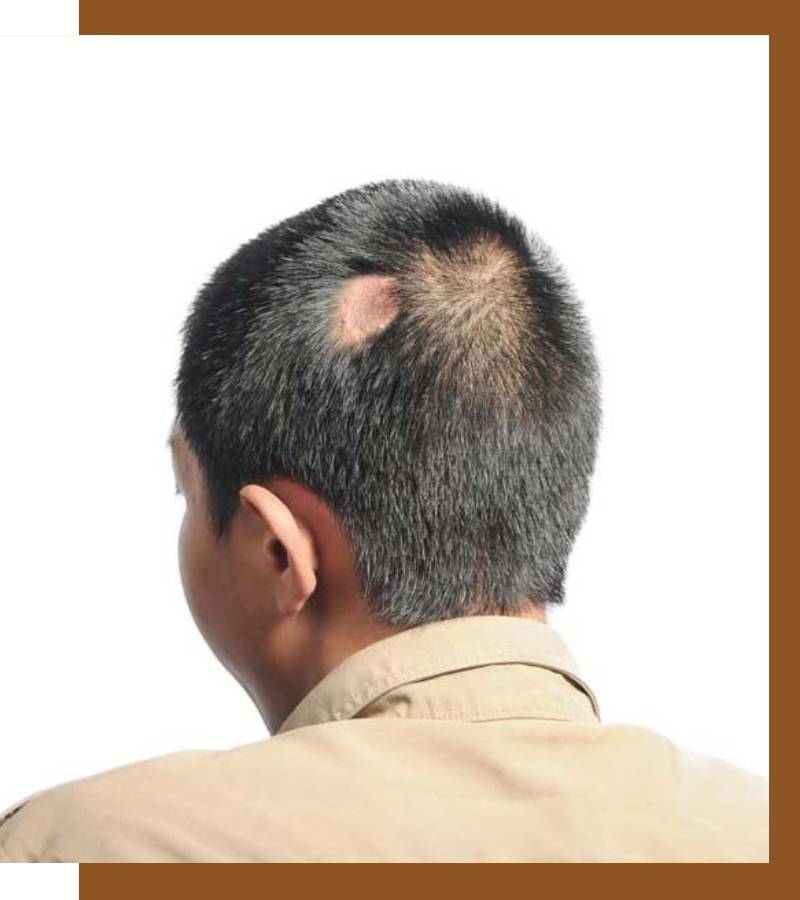
Looking to explore what is Scarring alopecia and how it is caused along the way? Here you go! This article prerequisites with details on the different types of Scarring alopecia, symptoms and possible treatment options available to see the visible end results.
What is Scarring Alopecia?
Scarring alopecia is a joint disorder that affects hair growth and is diagnosed in 3% of hair loss patients. This disorder is otherwise called Cicatricial alopecia. This can happen to everybody irrespective of gender and age. However, the disturbance in our body can be caused by the medicines and other treatments used in systemic autoimmune diseases, fibromyalgia, etc.
This disease can be a part of much larger health issues like chronic lupus erythematosus, which may infect the body’s organs.
Different Types of Scarring Alopecia:
Different forms of Scarring alopecia can cause different types of hair loss, and the intensity varies as per the type of scarring alopecia.
The most common form of scarring alopecia is androgenic alopecia. It can cause irreversible and permanent damage to hair follicles. Furthermore, the hair follicles get replaced with scar tissues.
Another form of scarring alopecia can be more dangerous. Most of the types of scarring alopecia can go unnoticed for months as the initial symptoms begin with small patches of hair loss and can expand with no time. Some other types of scarring alopecia can cause itching, burning of the scalp, and also rapidly progressive.
+91 91212 19123
Call Us to Book an Appointment!
Causes of Scarring Alopecia:
Nowadays, the exact causes of Scarring alopecia have not been found. However, inflammation can be the main reason for scarring alopecia. Due to inflammation, the hair follicles get permanently damaged, and that causes scarring alopecia.
Apart from inflammation, hair loss can happen due to collagen’s progressive deposition, frequent association with sebaceous glands. Going deep to the cause, the destruction of slow-cycling hair follicle stem cells can be another primary cause for scarring alopecia.
Another theory also reveals the fact that proliferator-activated receptors can cause scarring alopecia.
Signs & Symptoms of Scarring Alopecia:
As mentioned earlier, there is one type of scarring alopecia, which can go unnoticed for months. That means it develops no such symptoms so that it can be assumed. Even though some types of scarring alopecia develop sure signs and symptoms to guess the disorder at its primary stage.
The symptoms can start from itching of the scalp, burning of the scalp etc. Patches of rough skin can also suggest that you are going to be affected by scarring alopecia. Scaly skins, the formation of blisters can also be one of those signs of scarring alopecia.
How to Diagnose Scarring Alopecia?
Diagnosis of scarring alopecia starts with observing typical symptoms. If those symptoms are well developed, then the actual diagnosis starts.
Scarring alopecia can be diagnosed with a test called hair pulling. The procedure started with 20 strains of hair being grabbed together and pulled upwards gently, away from the skin. It is normal if 3-4 follicles get extracted with each pull. But if more than ten inches are getting removed in each draw, the test is considered positive.
For more information regarding the diagnosis procedure of Scarring Alopecia, You could reach out to our skin and hair care experts at Dermiq who are encountered to provide high-quality treatment and useful suggestions.
How to Treat Scarring Alopecia?
Treatment of scarring alopecia is not very common. That means hair growth is not very common in primary scarring alopecia except for the recent cutaneous lupus erythematosus.
Through early and effective diagnosis, the disorder can be managed properly. The progression of the hair loss can be slowed down. Hair regrowth treatment can be done, but it is not entirely convincing. Although it is not entirely recoverable, it can get slower.
There is no such proper treatment available for scarring alopecia. How ever finding the cause of scaring alopecia & treating that condition helps us to stop the spread & prp helps for repair & regrowth damaged folical.
PRP for Refractory Scarring (Cicatricial) Alopecia:
Platelet Rich Plasma treatment is now evolving much more. This can be a better option to treat scarring alopecia and other alopecia types like the alopecia area. PRP hair treatment is an emerging treatment option for recalcitrant cases of scarring alopecia that can not be cured in different ways.
To Learn More regarding PRP treatment for Scarring Alopecia you could reach out to Dermiq by calling our experts or via email info@dermiqclinic.com.
Wrapping Up
Hair loss can be a disorder that can depress anybody. But nowadays, it has become easier to get diagnosed and get access to hair loss treatments. So, going for a diagnosis can be the best thing you will do for yourself. In order to make smarter choices and take care of your health, contact our highly skilled skin/hair care specialists at Dermiq who will be delighted to assist and provide you with the best solution.


